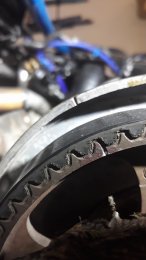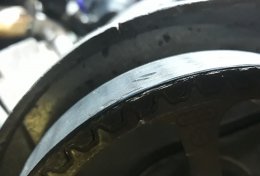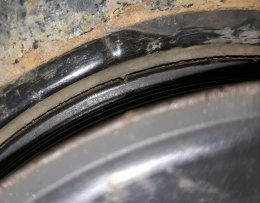All good now. found this post that explains everything
To test the timing chains often only the values in VCDS blocks 208 & 209 are deemed relevant. However, this is misleading for correct diagnosis of guide/chain wear and possibly other components.
Therefore, ALWAYS reference
blocks 90 & 91 when checking blocks 208 & 209. This then basically references the cam to crank timing via the intermediate
shaft by correlation of the
crank sensor to the cam phase
sensors.
• The timing chains values in blocks 90,91, 208 & 209 must always be read when the
engine is warm. Measurements must always be taken at a minimum of about 60°C operating/oil temperature or higher, otherwise the cam adjustment is not yet fully active.
• Measurements are always taken at idle
Valid for both MK4 and MK5 R32:
• Blocks 208 & 209 should be as close as possible to 0°, the spread should not exceed 3°. The absolute wear limit is 8° spread whether + or minus. If the spread is well above 3° but under the limit, then chain & guide replacement should be considered.
Cross examination of the intermediate shaft values of blocks 90 & 91:
Golf 4 R32 only (
intake adjustment range 52°/exhaust adjustment range 22°):
• Block 90 (exhaust) set-point is 0°, no matter the values in blocks 208 & 209, at a duty ratio of about 15.3%. The actual value should not be more than 0.5° out (Valid for both
OEM & aftermarket cams). If the values are way off from 0° the timing chain may be mistimed or skipped. Around 11.25° deviation corresponds to a skip of 1 tooth.
• Block 91 (intake) set-point is 22° between idle to about 1200RPM, no matter what the values read in blocks 208 & 209, at a duty ratio of about 15.3%.
The actual value should not be more than 0.5° out (valid for both
OEM & aftermarket cams). If the value is not close to 22° the timing chain may be mistimed or skipped. Around 11.25 ° deviation corresponds to a skip of 1 tooth.
Golf 5 R32 & Audi BUB only (intake adjustment range 52°/exhaust adjustment range 42°):
• For both blocks 90 & 91 the set-point value at idle is 0°, no matter what the values in blocks 208 & 209, at a duty ratio of about 15.3%.
The actual value should not be more than 0.5 ° (Valid for both OEM & aftermarket cams).
If the values are way off from 0° the timing chain may be mistimed or skipped. Around 11.25° deviation corresponds to a skip of 1 tooth.
You can for whatever reason also check the cam/crank timing manually by setting the timing to TDC via the timing mark on the
crank pulley then pulling the cam phase sensors and checking where the centre parts of the cam variators sit with respect to the
sensor hole. I’ll dig out a pic from somewhere and annotate it as it’s quite obvious once you see it. I guess this won’t be quite as accurate as checking blocks 90,91, 208 and 209 in VCDS but might prove helpful nonetheless.
Additional for consideration:
As is known faulty cam phase sensors cause spurious readings. However a surprising point to note is that high values are not always indicative of worn guides or a stretched chain! There have been many (and I mean many!) instances in Germany whereby poor service intervals (Longlife) has gummed up the cam variators/VVT assemblies/solenoids resulting in high values that’s clearly appeared to be worn chains but after several oil flushes and
filter changes returned to almost perfect ‘out the factory’ values. There appears to be some correlation between the intercam timing spread and the intermediate shaft values that points to this; if I can find the original page I’ll save it off and translate it. As best as I can tell a good way to help in diagnosing if the chains truly require replacing is to also log the requested vs actual cam timing in VCDS. One of the symptoms of sluggish cam timing is mild bucking/hesitancy similar to a faulty MAF. If the actual values values are slow to match the requested values then his points to a gummed up VVT system or the inlet gauze possibly being blocked.
The snapped chain syndrome on the early MK4s was attributed to the Sachs stamping weakening the chain links and also related to chemical corrosion caused by the extended Longlife service intervals (A topic for a possible future post when I get around to translating it).
Chain stretch was mainly attributed to buggy/poor implementation (in early software revisions) of the VVT causing cam kickback and resonance effects on the chains at particular RPMs; this also may attribute to guide wear (but the likely main culprit was still the extended Longlife -what an oxymoron- service intervals) and (I've not fully translated this yet) possibly linked to faulty pressure relief valves in some oil
pumps although that again could simply be caused by the extended Longlife service intervals.
https://forums.vwvortex.com/showthread.php?8367938-VCDS-Measuring-blocks-208-209-Help










